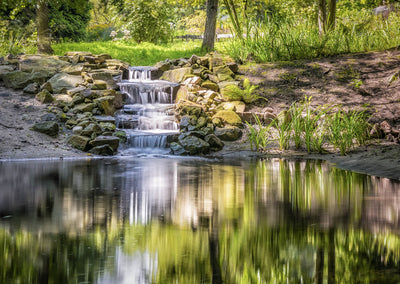The Amazing European Garden Spider (Araneus diadematus)

Before you freeze back in horror at the sight of a spider, you might want to read on to learn just how beneficial the European Garden Spider is for your garden and home alike.
First, let's get some facts straight. Garden spiders are not aggressive nor dangerous and do not attack people. In sporadic cases, does a spider-like this bite, but you would have to accidentally or not hurt a spider to make it need to protect itself before it would resort to biting you. In addition, the mouthparts of these spiders are so small that it makes it hard even to penetrate rubbery human skin! If anything, some people may have an allergy to one or more of the substances found in the mild venom. To avoid losing precious venom, the spider usually opts to vibrate rapidly or bounce up and down in its web until it becomes a blur of motion; thus, confusing would be predators.
The European Garden spider belongs to the "orb weaver or cross orb weaver" group - spiders that spin wheel-shaped or circular webs. You can find their large (up to 40 cm in diameter) webs throughout your garden, especially in October. Garden spiders, being carnivores, eat a variety of prey, including grasshoppers, mosquitoes, bees, wasps, aphids and flies. Females are much larger than males, and each spider only weighs between 50 and 80 mg. Sometimes the female will kill and eat the male before, during or after copulation.
Female spiders are easily identified by their expansive abdomens, attractive mottled coloration and furry legs. Each spider shows off a unique range of colours - yellows, oranges, browns, reds, whites, tans and dark greys. The mottled or crossed colours are arranged intermittently with white dots that form a cross-like arrangement on the back. Interestingly, the markings arise from cells filled with guanine, a byproduct of protein metabolism.
The legs of female orb-weaver spiders are specialized for spinning orb-like webs. The female often sits at the center of the web circle or hides under nearby foliage. With her hooked leg claw, she holds onto a single strand of web and waits for the vibrations caused by an insect getting caught in the web. Once prey becomes web bound, the spider quickly descends, bites to paralyze, and injects enzymes that liquefy the internal structures. She then wraps her prey in silk before storing it for future meals. Observers have reported witnessing female spiders eating their entire web, including trapped prey, every night, and some spiders can eat their web in just a few minutes before spinning a new web by morning.
In late September, females leave their web and seek protected areas to lay their eggs. Females produce a fluffy, yellowish-orange silk-laden egg sac roughly 20 mm in diameter. Each egg sac consists of approximately 100-1000 eggs. Once they have built their egg sac, they die soon afterward. Aside from having an apparent black area on the hindmost portion of the abdomen, each bright yellow baby spider hatches in spring when temperatures start to rise. The young disperse gradually via a method called "ballooning." Each baby spider extrudes thin strands of silk from their spinnerets, and when a breeze arises, these strands act like a sail, lifting the spiderling into the air and carrying it meters to kilometres away! Eventually, the independent spiderling lands in a new environment in which it must set up its first web and become adept at hunting. Both young males and females build webs to catch prey; however, when males are mature, they opt to abandon web building and instead wander searching for females.
The European Garden Spider is one of the most well-known spiders globally and has been the study of many research papers. In 2010, the species was awarded "European Spider of the Year," and in 1952, it was the star of a short, Oscar-winning documentary called "Epeira Diadema" directed by Alberto Ancelotti.
An essential focus of KHS Landscape professionals is to promote garden diversity and plant-animal understanding. If you have garden spiders, it means your garden is attracting ample prey. The more garden plant and habitat diversity you have, the more healthy your garden is. If you can, try to make peace with these beneficial critters. Understanding something can go a long way to lessening fears.
![]() If you would like to learn more about the various beneficial and non-beneficial critters living on your property or in your gardens, give us a call. At KHS Landscape Professionals our maintenance staff are passionate about natural landscape maintenance. Included with that is a strong need to help create and maintain well functioning, balanced habitats that continuously attract insects, birds and mammals that benefit your property.
If you would like to learn more about the various beneficial and non-beneficial critters living on your property or in your gardens, give us a call. At KHS Landscape Professionals our maintenance staff are passionate about natural landscape maintenance. Included with that is a strong need to help create and maintain well functioning, balanced habitats that continuously attract insects, birds and mammals that benefit your property.





